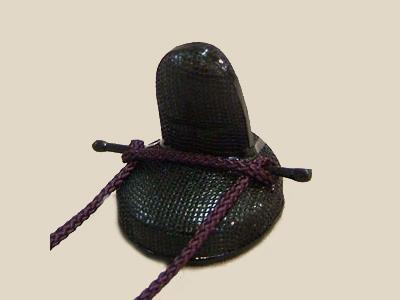|
Edo Kimekomi Dolls are made in Tokyo and Saitama. They are made by tucking and fixing cloth (usually brocade) costumes to grooves on the doll's body.
The first doll of this kind is said to have been made by a priest at the Jogamo Shrine in Kyoto, who fixed scraps of cloth to a notched piece of wood.
After that, kamo-hina dolls spread to Tokyo, where they came to be called Edo Kimekomi. By the end of the Edo period, many dolls of this type were being made.
The body of the doll is made from toso, which is paulownia powder mixed with wheat starch glue. Then, the body is notched and the costume is fixed to the grooves.
Edo Kimekomi Dolls have long, lean shapes and fine, delicate features: the contrast with the plumper Kyoto dolls is very interesting.
The first doll of this kind is said to have been made by a priest at the Jogamo Shrine in Kyoto, who fixed scraps of cloth to a notched piece of wood.
After that, kamo-hina dolls spread to Tokyo, where they came to be called Edo Kimekomi. By the end of the Edo period, many dolls of this type were being made.
The body of the doll is made from toso, which is paulownia powder mixed with wheat starch glue. Then, the body is notched and the costume is fixed to the grooves.
Edo Kimekomi Dolls have long, lean shapes and fine, delicate features: the contrast with the plumper Kyoto dolls is very interesting.
| [+ADDRESS] | 
|















